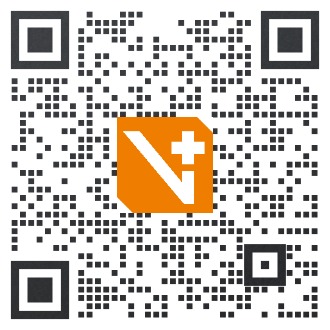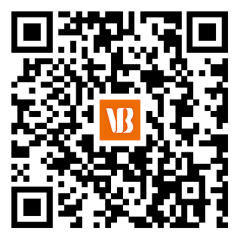
商务合作

动脉网APP

可切换为仅中文
Dan Torrens, CEO of eHealth Technologies
电子健康技术首席执行官丹·托伦斯
Patient data interoperability sounds like industry jargon, but it’s a vital piece of providing timely and accurate patient care. Since 1996, when the Health Insurance Portability and Accountability Act (HIPAA) became law, there have been good advances in patient data interoperability, but as a whole, the industry has not embraced them. .
患者数据互操作性听起来像是行业行话,但它是提供及时准确的患者护理的关键部分。自1996年《健康保险可移植性和责任法案》(HIPAA)成为法律以来,患者数据互操作性取得了良好进展,但总体而言,业界并未接受这些进展。。
Sharing data through faxing and CDs is still very common. As recently as 2023, between 30 and 47 percent of hospitals across all sizes reported still using fax or mail to send and receive patient records, according to the Government Accountability Office.
通过传真和CD共享数据仍然很普遍。据美国政府问责局(Government Accountability Office)统计,截至2023年,各大医院中有30%至47%的医院仍在使用传真或邮件收发病历。
Only 40 percent of hospitals electronically integrated data from other hospitals outside of their system and a meager 30 percent of skilled nursing facilities exchanged data outside of their walls, according to the Office of the National Coordinator for Health Information Technology.
根据国家卫生信息技术协调员办公室的数据,只有40%的医院在系统外以电子方式整合了其他医院的数据,只有30%的熟练护理机构在墙外交换数据。
Relying on outdated record-sharing methods can delay the opportunity for patients to take advantage of life-altering care. Hospitals and healthcare systems can do better.
依靠过时的记录共享方法可能会延迟患者利用改变生活的护理的机会。医院和医疗保健系统可以做得更好。
The time to referral should be days, not weeks (or longer)! A leading opportunity to improve patient outcomes is by decreasing the time it takes for patients to receive appropriate treatment and get on the road to recovery as quickly as possible.
转诊的时间应该是几天,而不是几周(或更长)!改善患者预后的一个主要机会是减少患者接受适当治疗并尽快恢复的时间。
Healthcare interoperability – it’s so promising, but confusing at the same time.
医疗保健互操作性–它是如此有前途,但同时也令人困惑。
In 2009, the Health Information Technology for Economic Clinical Health Act (HITECH Act) was passed, incentivizing the use of electronic medical records (EMRs). This drove the use of Electronic Health Record systems (EHRs) in acute care hospitals to 84 percent by 2015. As recently as 2022 the Trusted Exchange Framework and Common Agreement (TEFCA) was published to establish universal governance and policies for interoperability, simplify the secure exchange of information and allow individuals to gather their healthcare information. .
2009年,通过了《健康信息技术促进经济临床健康法案》(HITECH法案),鼓励使用电子病历(EMR)。到2015年,这促使急诊医院使用电子健康记录系统(EHR)的比例达到84%。直到2022年,《可信交换框架和共同协议》(TEFCA)才发布,以建立通用的互操作性治理和政策,简化信息的安全交换,并允许个人收集其医疗保健信息。。
While we have made leaps, the challenges are still vast. The number of channels to obtain records has grown:
虽然我们取得了飞跃,但挑战仍然巨大。获取记录的渠道数量有所增加:
Direct to providerDirect to ROI (release of information) vendorHIE (health information exchange)Network
直接向供应商直接向ROI(信息发布)供应商(健康信息交换)网络
Within those channels, there are still a wide array of methods for information to be exchanged:
在这些渠道中,仍然有各种各样的信息交换方法:
APIPortalSecure messagesFax/callMail
APIPortalSecure邮件传真/呼叫邮件
Progress has been made, and the infrastructure is there, but it’s not being leveraged by everyone or even by every organization. This makes the process more complex than it needs to be. If a provider needs records and images for a patient, where do they start? In which channel do those exist? What is the fastest method to receive them? How do they request and receive those records? The list of questions goes on and on. .
已经取得了进展,基础设施也在那里,但并不是每个人甚至每个组织都在利用它。这使得流程比需要的更复杂。如果提供者需要患者的记录和图像,他们从哪里开始?这些存在于哪个渠道?接收它们的最快方法是什么?他们如何请求和接收这些记录?问题清单不停地列着。
Now is the time for healthcare systems to embrace interoperable technology to gain a competitive market edge and improve patient outcomes.
现在是医疗保健系统拥抱互操作技术以获得竞争市场优势并改善患者预后的时候了。
We have the capability to seamlessly collect, clinically organize and deliver comprehensive medical histories for patients — but why are hospitals and clinics still sending faxes and calling providers? If these organizations were to fully embrace the available technology, it would not only improve patient outcomes but enhance the clinician experience as well. .
我们有能力无缝收集、临床组织和为患者提供全面的病史-但为什么医院和诊所仍在发送传真和致电供应商?如果这些组织完全接受可用的技术,不仅可以改善患者的预后,还可以提高临床医生的经验。。
One of the largest delays in care is caused by the time it takes to collect, organize and deliver medical histories. Without access to a patient’s comprehensive past, that critical first appointment can be delayed for days or weeks and can negatively impact potentially life-changing treatments.
护理方面最大的延误之一是由于收集、组织和提供病史所需的时间。如果无法了解患者的全面过去,那么关键的首次预约可能会延迟数天或数周,并可能对潜在的改变生命的治疗产生负面影响。
Maximizing healthcare interoperability and even integrating technology like Artificial Intelligence (AI) can help efficiently determine the best, most efficient route to gather and request complete medical histories. This allows medical professionals to offer patients more immediate care and enables enhanced communication between physician providers and patients. .
最大限度地提高医疗保健互操作性,甚至集成人工智能(AI)等技术,可以帮助有效地确定收集和请求完整病史的最佳,最有效的途径。这使医疗专业人员能够为患者提供更即时的护理,并增强医生提供者和患者之间的沟通。。
The benefits of embracing healthcare interoperability include improved clinician experience, more meaningful first appointments, reduced patient leakage, reduced time to treatment and improved patient outcomes. Leveraging EHRs and supporting healthcare technology helps providers connect efficiently with other providers and release of Information (ROI) vendors, HIEs and networks in the right way.
接受医疗保健互操作性的好处包括改善临床医生的经验,更有意义的首次预约,减少患者渗漏,减少治疗时间和改善患者预后。利用电子健康档案和支持医疗保健技术有助于提供商与其他提供商有效联系,并以正确的方式发布信息(ROI)供应商、HIE和网络。
From there, clinically organized, comprehensive medical histories can be delivered in a timely manner. .
从那里,可以及时提供临床组织的综合病史。。
Instead of physicians waiting days or weeks and then having to sift through hundreds of pages of disparate medical records to find a few items of importance, healthcare systems can embrace interoperability and AI to decrease the time to treatment for patients. Requests for records, images and pathology materials can be received directly through EHRs and, in turn, a clinically organized, complete medical history can be delivered.
医疗保健系统可以采用互操作性和人工智能,以减少患者的治疗时间,而不是医生等待数天或数周,然后不得不筛选数百页不同的医疗记录以找到一些重要的项目。可以通过EHR直接接收记录,图像和病理学材料的请求,进而可以提供临床组织的完整病史。
That information can also appear seamlessly within the clinical workflow. .
这些信息也可以无缝地显示在临床工作流程中。。
Clinicians can avoid the need to hunt for information within a mountain of unorganized records and, instead, spend more time focusing on their patients.
临床医生可以避免在堆积如山的无组织记录中寻找信息,而是花更多时间关注患者。
Let’s all keep the goal in sight: Advance the delivery of life-altering care by providing clinicians with clinically organized patient histories in a timely manner—a top solution to help improve patient outcomes.
让我们都牢记这个目标:通过及时为临床医生提供临床组织的患者病史来推进改变生活的护理,这是帮助改善患者预后的最佳解决方案。
About Dan Torrens
关于Dan Torrens
Dan Torrens is CEO of eHealth Technologies, a leading healthcare technology company advancing the delivery of life-altering care through innovative record retrieval and image exchange solutions.
Dan Torrens是eHealth Technologies的首席执行官,eHealth Technologies是一家领先的医疗保健技术公司,通过创新的记录检索和图像交换解决方案推动提供改变生活的护理。
最近内容 查看更多
医疗保健服务提供商Ballad Health与Sevaro Health合作优化中风护理
10 小时前
医疗保健公司Premier与MazeMap签订全国团购协议,提高医疗机构的导航和运营效率
10 小时前
TytoCare与5个卫生系统合作,为100多所学校带来远程医疗
10 小时前
相关公司查看更多

eHealth Technologies
医疗保健技术服务提供商
产业链接查看更多
所属赛道